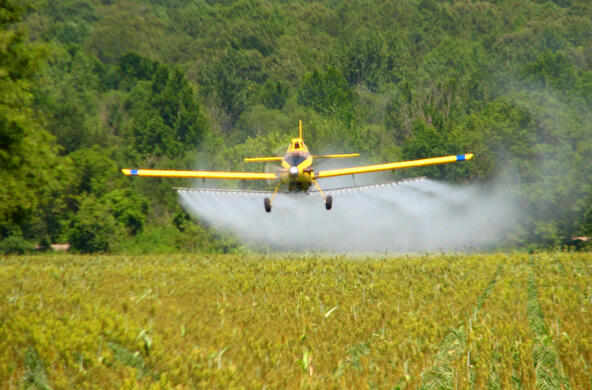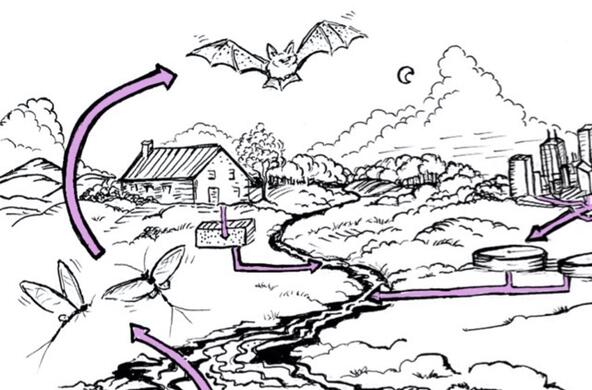Although often attributed to Sir John Crapper, it was Alexander Cumming who perfected the design of the flush toilet in 1775, forever changing the way that humans dispose of their personal waste.
No longer was waste deposited in the chamber pot or privy. Health and sanitation improved markedly, but an entirely new problem faced society: what to do with liquid waste or sewage waters. In the developed world, most human waste is now sent to a sewage treatment plant or through a local septic system to cleanse and renew the waters that carry it.
Sewage treatment plants and septic systems are designed to take organic wastes and convert them to CO2, NO3 and PO4. We depend on fungi and bacteria to degrade the waste. In some levels of treatment, bacteria are used to convert NO3 to N2, which is returned to the atmosphere. Some chemicals, such as sorbitol, sodium fluoride in toothpastes and sodium hypochlorite in bleach, are not unknown in the natural environment and pass through sewage treatment with little notice. In contrast, many of the synthetic chemicals in our daily lives are xenobiotic—that is, not known in the natural world. Paraben is such a synthetic compound that is added to cosmetics as an antibacterial agent. Silver and copper nanoparticles are added to athletic fabrics to retard the odor of human perspiration.
For the past 100 years, we have embraced the concept of “better living through chemistry.” Chemical manufacturers churn out nearly 80,000 chemicals that keep our farmlands free of weeds and bugs; personal care products that color, straighten, or curl our hair, repel biting insects, retard fires, and cleanse our dishes and laundry; and more than 10,000 drugs that are available to regulate our metabolism and mood, sooth aches and pains and regulate hormonal urges. Visit any local garden store and you will breathe the smell of a plethora of chemicals designed to give each of us the Green Thumb of victory over nature.
I looked at the label of a few products around our house, finding C10-16 Alkyldimethylamine oxide (Dawn); N, N-Diethyl-meta-toluamide (Off); Aluminum zirconium tetrachlorohydrex (Arid Deoderant), tripropylene glycol n-butyl ether (toilet cleaner), and pyrithione zinc (Head and Shoulders). A chemical plant dumping these compounds into local waterways would be subject to prosecution. Question is: what happens to all this exotic stuff when we flush it into the environment? It is a lot to ask the microbial population in a septic system to break down chemicals that they have never experienced in nature, let alone those designed to inhibit their activities.
Many of these chemicals, especially drugs, are designed to be long-lasting, so they can do their job well. Thus, they persist in the environment. The U.S. Geological Survey has recently reported that at least 47 pharmaceuticals were detected in the drinking water at 25 locations across the U.S., apparently unscathed as they pass through our bodies or by microbial degradation in sewage treatment plants. Often, the fishes and other organisms downstream are bathed in a solution of antidepressants, estrogen, and lithium.
We think of water pollution as derived from the blatant release of chemicals from the corporate world into local waterways, but the same compounds are found in sewage waters that also end up downstream and in groundwater. What’s in your water?
References
Bernhardt, E.S., et al. 2017. Synthetic chemicals as agents of global change. Frontiers in Ecology Environment doi: 10.1002/fee.1450
Furlong, E.T., and 6 others. 2017. Nationwide reconnaissance of contaminants of emerging concern in source and treated drinking waters of the United States: Pharmaceuticals. Science of the Total Environment 579: 1629-1642.
Rosi-Marshall, E.J., D. Snow, S.L. Bartelt-Hunt, A. Paspalol and J.L. Tank. 2015. A review of the ecological effects and environmental fate of illicit drugs in aquatic ecosystems. Journal of Hazardous Materials 282: 18-26.







